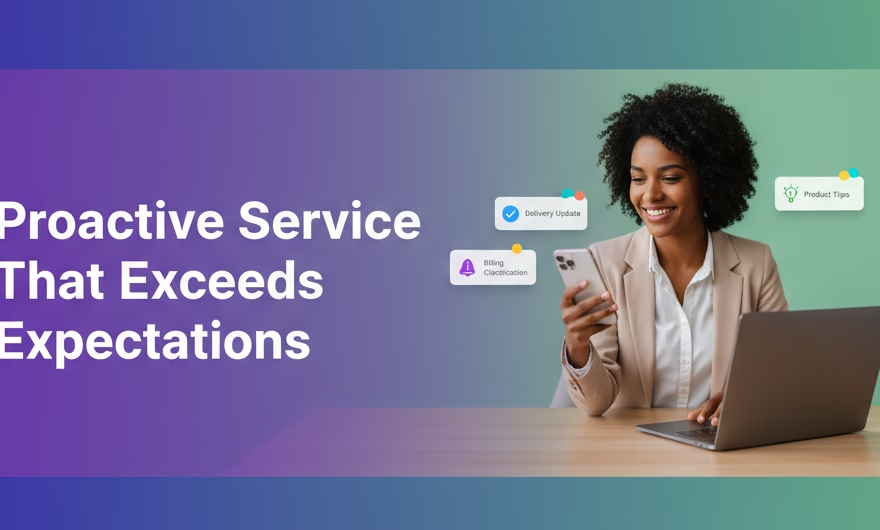Have you ever called a well-managed contact center and spoken to a friendly, efficient support agent? It might have felt like you were interacting with a large-scale enterprise, even if the company was a small startup. Businesses of all sizes can now set up fully functional contact centers within hours using modern technology.
Before you invest in Contact Center Infrastructure, you must understand what goes into it. Let’s break it down.
What is Contact Center Infrastructure (CCI)?
At its core, CCI is the foundation that supports customer communication. The right CCI ensures smooth operations whether your business handles inbound inquiries, outbound sales, or customer support.
CCI includes:
- Hardware: Physical components like LAN, Automatic Call Distributors (ACD), Predictive Dialers, and Voice Logging systems
- Software: Tools such as Customer Relationship Management (CRM) systems, AI-driven automation, and marketing integrations to enhance customer interactions
- Telecom Network: Contact centers rely on Voice-over-IP (VoIP) technology to manage voice communication, similar to how mobile phones connect through telecom providers.
With the right CCI setup, businesses can deliver efficient, scalable, and high-quality customer experiences. Now, let’s explore the different types of contact center software that power these operations.
Types of Contact Center Software: Choosing the Right Fit for Your Business
Selecting the right contact center software helps maintain seamless customer interactions while ensuring scalability and efficiency. Businesses typically have three options:
- On-Premise Contact Center
- Hosted Contact Center
- Cloud-Based (Virtual) Contact Center
Each model has its own advantages, which is why you need to align your choice with your business needs and long-term growth strategy.
On-Premise Contact Center: Full Control & Security
An on-premise contact center is housed within a company’s own infrastructure, with the IT department managing its setup and maintenance. This model can provide:
- Maximum security as all systems run on the company’s internal network and ensure data protection
- Complete control as businesses can customize operations to match their workflow
- Reliable performance as there is no dependency on external service providers
However, on-premise solutions require significant upfront investment in hardware, software, and ongoing IT support.
Hosted Contact Center: A Cost-Effective Middle Ground
A hosted contact center shifts the infrastructure off-site to a third-party provider while agents access the system via the Internet. This model offers:
- Lower Initial Costs because there is no need to invest in expensive in-house hardware
- Simplified maintenance as the service provider handles software updates and system management
- Remote accessibility allowing agents to operate from different locations
While cost-efficient, this setup may come with limited customization options since businesses rely on the provider’s infrastructure and updates.
Cloud Contact Center: Ultimate Flexibility & Scalability
Imagine the transition from renting DVDs to streaming on demand. That’s what cloud contact centers have done for customer service. With everything hosted online, companies can:
- Adjust resources based on demand without hardware investments
- Allow agents can operate from anywhere and enable hybrid or fully remote teams
- Reduce costs as there is no need for in-house IT infrastructure
This on-demand model offers the most agility, allowing businesses to adapt quickly to changing customer service needs.
On-Premise vs. Hosted vs. Cloud Contact Centers: Making the Right Choice
While cloud-based solutions provide unmatched scalability and cost savings, some businesses may prefer an on-premise setup for control and security. If your operations are stable and housed in a single location, an in-house contact center may be the best fit.
On the other hand, hosted contact centers can reduce infrastructure costs while still requiring some reliance on external providers. Ultimately, scalability, cost, and operational control should guide your decision.
Best Practices for Setting Up a Contact Center
- Establish a timeline and growth plan for your contact center.
- Choose a solution that aligns with your business needs and expansion plans.
- Hire industry experts to optimize operations.
- Measure performance and implement Key Performance Indicators (KPIs) to track efficiency.
- Always have a disaster recovery strategy in place.
Optimizing Your Cloud Contact Center for Maximum Efficiency
Once you have embraced the cloud contact center revolution, you need to stay ahead and continuously improve your CCI to enhance efficiency, customer satisfaction, and overall performance. Here’s how you can take your virtual contact center to the next level:
Ensure Omni Channel Communication
You can transform your contact center into a Customer Engagement Hub by enabling seamless interactions across multiple channels – voice, chat, email, social media, and web. This integrated approach ensures customers receive consistent support, no matter how they choose to reach out.
Leverage AI & Big Data
Enhance decision-making with AI-driven analytics and big data insights. AI can assist in sentiment analysis, chatbot automation, and predictive analytics, helping your agents personalize interactions and anticipate customer needs. Emotional intelligence tools can further refine customer service by recognizing tone and sentiment in conversations.
Enhance Customer Experience with Unified Profiles
You can ditch fragmented interactions by adopting single customer profiles that consolidate all past interactions across different touchpoints. Customer journey mapping helps visualize behavior patterns, allowing you to proactively address concerns and provide a more tailored experience.
Boost Contact Center Performance
Operational excellence is about efficiency and quality. You can optimize workflows, improve first-call resolution (FCR) rates, and minimize response times to enhance overall service delivery.
Implement Smart Workforce Management (WFM)
Effective Workforce Management (WFM) tools can eliminate inefficiencies, improve agent productivity, and balance workloads. This can ensure your team operates at peak efficiency without unnecessary stress.
If your legacy system is holding you back, upgrading to a modern, AI-powered contact center solution can revolutionize the way you engage with customers. The key to delivering exceptional customer experiences lies in innovation, seamless integration, and data-driven insights. So, start today!





